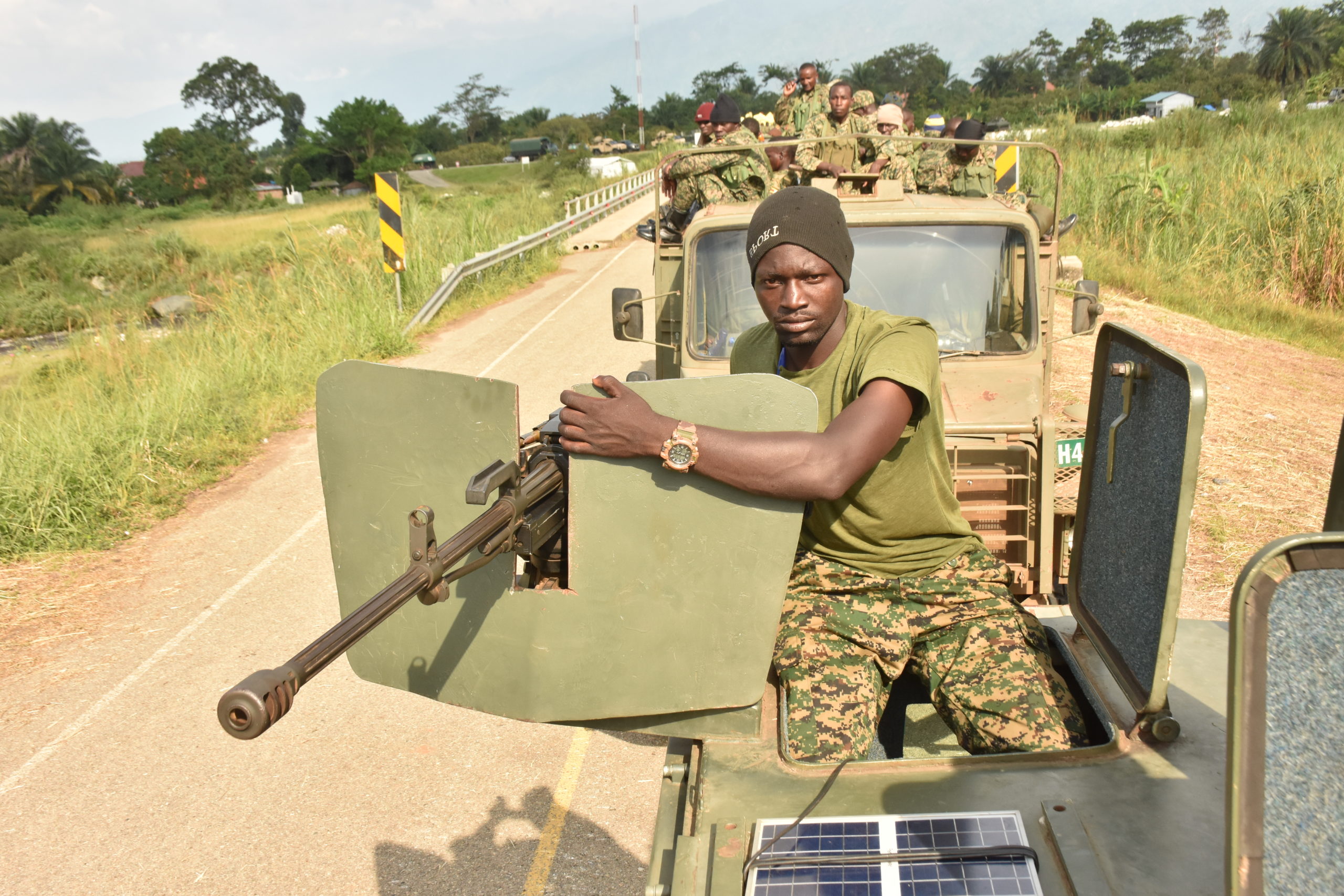Pan African Spirit Behind Operation Shujaa

The Uganda Peoples Defence Forces (UPDF) entered the DRC territory as confirmed by Brig Flavia Byekwaso, the UPDF spokesperson in the twitter press release on 30th November 2021.
This raised as much political and intellectual debate in Uganda and globally. It attracted as many critics as well and the highlight of it all was the tempers and various innuendos at the floor of the National Parliament of Uganda mostly from the opposition members, who among others queried the legality of the deployment of the troops by the President of Uganda who is the commander in chief of the Uganda people’s Defence Forces (UPDF).
Away from the right to self-defence in international law according to article 51 of the UN charter, it suffices to mention that Uganda’s Pan-African role is once more manifest in operation shujaa.
Although popular opinions would wish to view the Allied Democratic Forces as a Ugandan rebel group that is against the government of Uganda under President YK Museveni, the ADF has since metamorphosed into a regional threat to peace.
When it got flashed out of Kasese, its original base, the ADF then found home in the DRC. Yet the DRC shares approximately 6,835 miles of land and lake borders with nine countries and lacks the capacity to effectively patrol its borders.
The authority responsible for monitoring frontier activity, the Director-General of Migration, uses the International Organization for Migration’s Information and Data Analysis System (MIDAS), a computerized personal identification and recognition system, at only a fraction of the DRC’s more than 400 official border crossings according to the UN researchers.
Since 2010, the Department of State’s Bureau of International Narcotics and Law Enforcement Affairs (INL) has trained roughly 900 border officers from the National Police’s (PNC’s) Directorate Centrale de la Police des Frontieres Congolaise (Central Border Police Directorate), which oversees security and surveillance activities at border crossings. High turnover rates prevalent throughout the PNC resulted in few INL-trained officers remaining with border units.
The PNC anti-riot unit, the Légion Nationale d’Intervention, has a designated CT squad, which has limited staff and receives no specialized training or equipment.
The DRC is a member of the Southern African Development Community (SADC) and the International Conference on the Great Lakes Region (ICGLR). President Tshisekedi has raised the need for regional cooperation with these partners to combat armed groups with the ADF being the most notorious, to bring stability in the eastern DRC to little avail.
Claims that the Allied Democratic Forces (ADF) established ties with ISIS in late 2018 threatened the region’s peace the more. Before its ISIS affiliation, the ADF previously attempted outreach to Islamist terrorist groups for multiple years, including online posts by some ADF members in 2016 and 2017 referring to their group Madinat Tauheed Wal Mujahedeen while displaying an ISIS-like flag.
ISIS publicly recognized ADF as an affiliate in late 2018 and claimed responsibility for ADF attributed attacks starting in April 2019 after an attack on the Armed Forces of the Democratic Republic of the Congo (FARDC) base near Kamango on April 16. The ADF has been present in Beni for years and now includes a majority of Congolese fighters, and recruits fighters from around the great lakes region as well. In 2019, as in previous years, the ADF was responsible for numerous attacks on civilians, the FARDC, and UN peacekeepers.
During the calendar year, the Kivu Security Tracker (a joint project between the Congo Research Group and Human Rights Watch) documented 310 civilian deaths in North Kivu attributed to the ADF, as of December 13, 2019. In April, newly elected President Felix Tshisekedi visited Washington and publicly discussed the potential for ISIS expansion in North Kivu. During the visit, the DRC formally joined the Global Coalition to Defeat ISIS.
Throughout 2019, the ADF attacked Congolese civilians, the FARDC, and MONUSCO peacekeepers located in Beni Territory, North Kivu and southern parts of Ituri in eastern DRC. The Kivu Security Tracker reported that the ADF had killed at least 310 civilians in Beni Territory as of December 13, with the press reporting at least 32 additional deaths as of December 20. A significant increase in planned attacks on civilians was announced by ADF in response to FARDC operations against the ADF launched on October 30 2019. Following a period of low-level activity, the ADF re-emerged in 2014 with a series of attacks on Congolese civilians. Earlier reports on the ADF’s evolution point to its eventual re-emergence and rebranding when Musa Seka Baluku became the leader in 2015 following the arrest of his predecessor Jamil Mukulu. He reportedly first pledged allegiance to IS in 2016, But it was not until April 2019 that IS first acknowledged its activity in the area, when it claimed an attack on army positions near the border with Uganda.
This statement marked the announcement of IS’s “Central Africa Province” (Iscap), which would later include Mozambique.
It is at this point that one’s view of the ADF as a Ugandan problem, should change, and appreciate the UPDF’s entry into the DRC as a pan-African move to solve what is mostly likely to become a breeding ground for radical extremism in the Great-lakes region. More so, the eastern region of the Democratic Republic of Congo has long been a cradle of rebel activity, often the spill-over of conflict in neighbouring Rwanda, Burundi and Uganda.
As we speak, the ADF’s recent activity in the November 2021 twin bombings in Kampala has taken on a more global jihadist dimension, with attacks increasingly being claimed in the name of the Islamic State (IS) group. More to that, in September 2020, Baluku claimed that the ADF had “ceased to exist”; and been re-baptized; “At present, we are a province, the Central African Province, which is one of many provinces that make up the Islamic State,” he said.
What originally began as an anti-President YK Museveni group, has now become a terror menace; according to the UN’s refugee agency, the UNHCR, the ADF has killed about 200 civilians and displaced nearly 40,000 others in Beni since January 2021. The rebel group also targets government and UN troops and it is reported that since the emergence of IS in DR Congo, the frequency of attacks increased.
It is in such dimensions of the ADF’s activities, that one can best appreciate the move by the Ugandan army joining hands with the Kinshansa in operation shujaa.
Hongera sana Gallant sons of Africa.



Comments are closed.